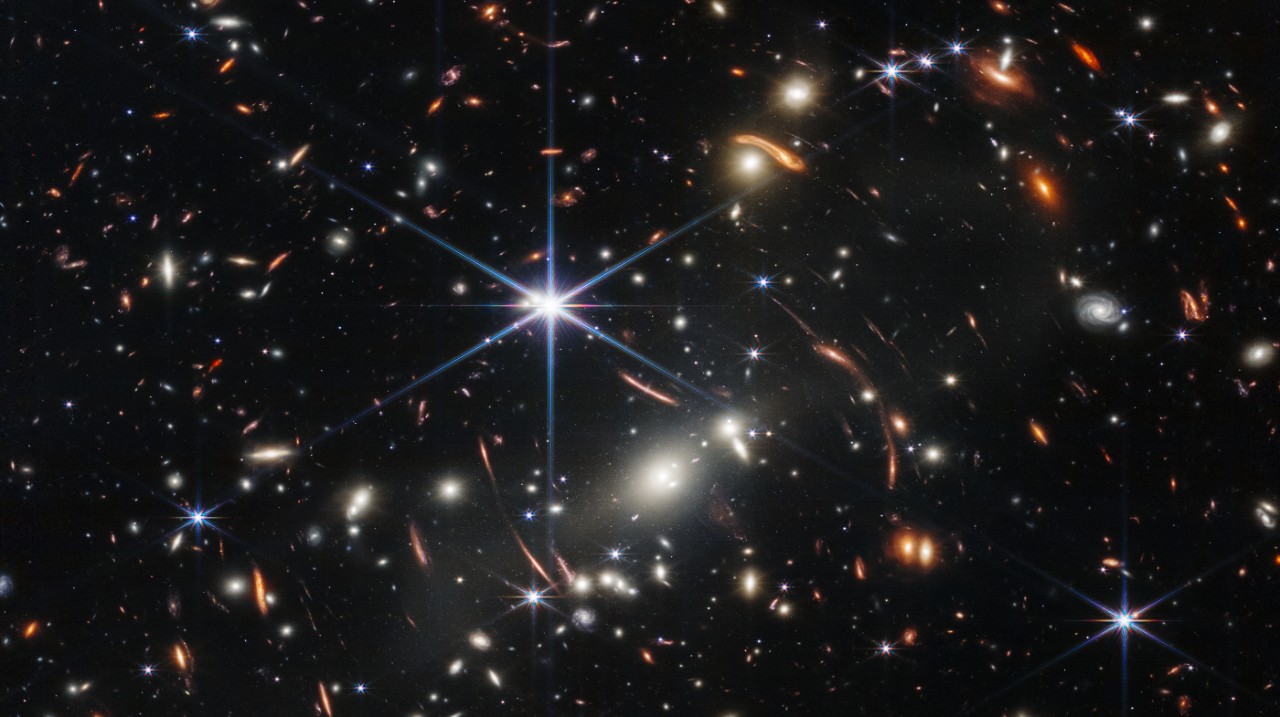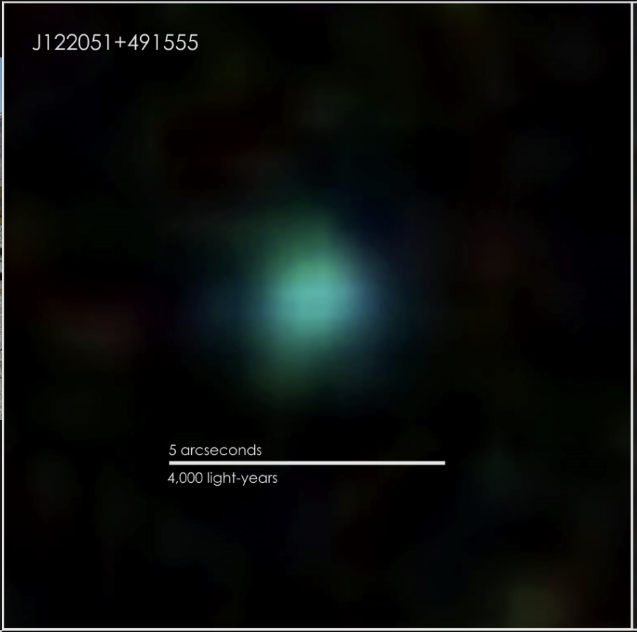
NASA: Webb telescope reveals links between galaxies
UC physicist contributes to analysis of distant galaxies
NASA talked to a University of Cincinnati physicist about the significance of imaging extremely young galaxies using the James Webb Space Telescope.
UC College of Arts and Sciences postdoctoral researcher Keunho Kim was co-author on a research team that published a study in January in the Astrophysical Journal Letters. They examined compact galaxies undergoing high rates of star formation called “green peas.”

NASA's James Webb Space Telescope captured what is believed to be a 'green pea' galaxy. Image/NASA, ESA, CSA and STScl
According to NASA, these galaxies depict colors — greens and reds — created by brightly glowing gas clouds.
“Peas may be small, but their star-formation activity is unusually intense for their size, so they produce bright ultraviolet light,” Kim told NASA. “Thanks to ultraviolet images of green peas from Hubble and ground-based research on early star-forming galaxies, it’s clear that they both share this property.”
The telescope was launched into orbit more than a year ago. It's offering the best look to date at distant phenomena in the universe.
Kim's research group presented its findings at the annual meeting of the American Astronomical Society in Seattle.
Featured image at top: NASA's James Webb Space Telescope captured galaxies with properties similar to 'green peas,' young, compact galaxies that generate new stars. Image/NASA, ESA, CSA and STScl
Related Stories
Senior peer career coaches graduate with resumes ready
April 17, 2021
Profiles three senior peer career coaches in the University of Cincinnati's Bearcat Promise Career Studio
UC students recognized for achievement in undergraduate research
April 12, 2021
Undergraduate student researchers in sciences and humanities recognized in 2021
UC Day of Giving a success
April 28, 2021
University of Cincinnati Day of Giving’s 24-hour challenge was a tremendous success this year, raising $2,219,197 with 3,232 gifts. The fourth annual UC Day of Giving raised its most money to date with alumni, donors, students, faculty and staff joining together to support UC and UC Health.
